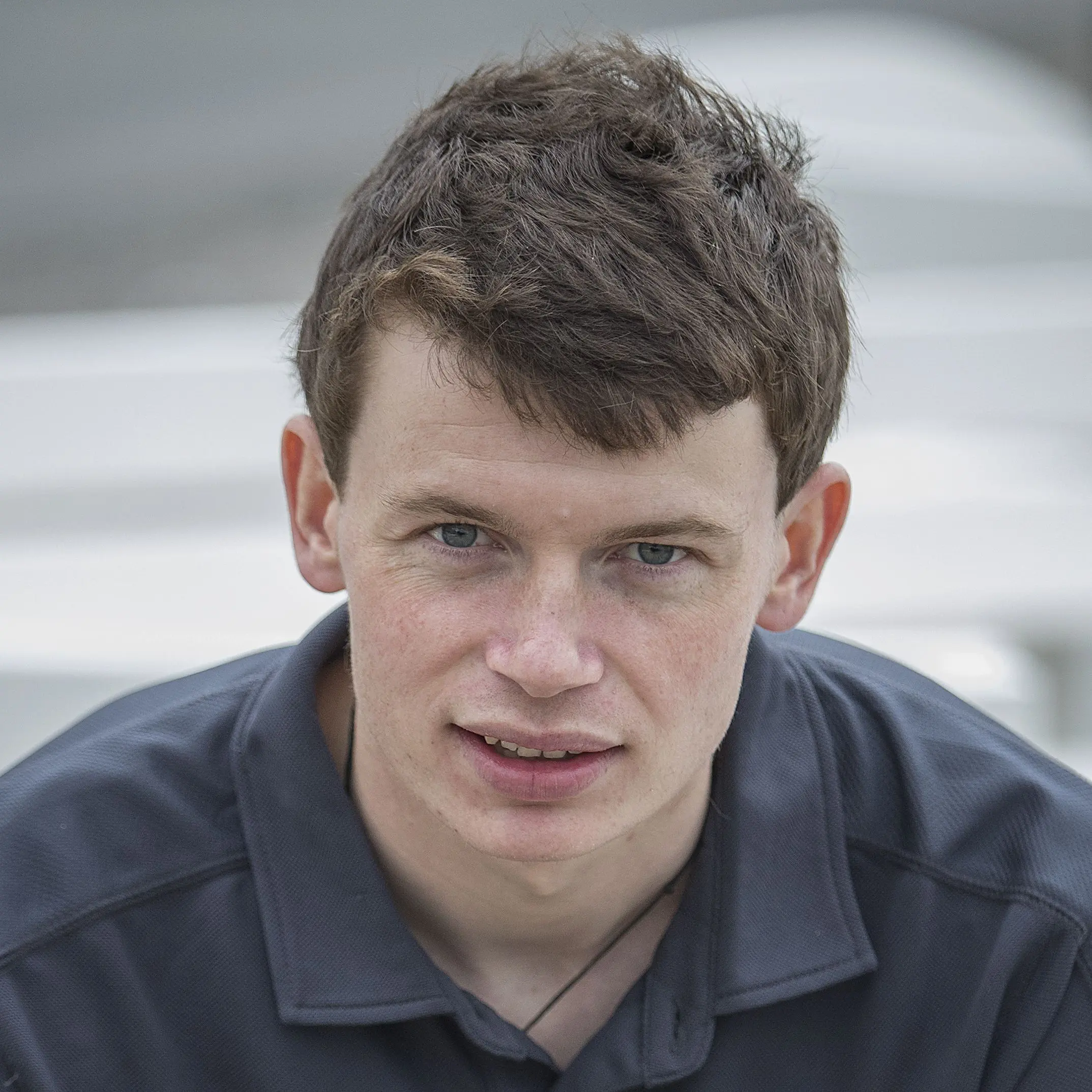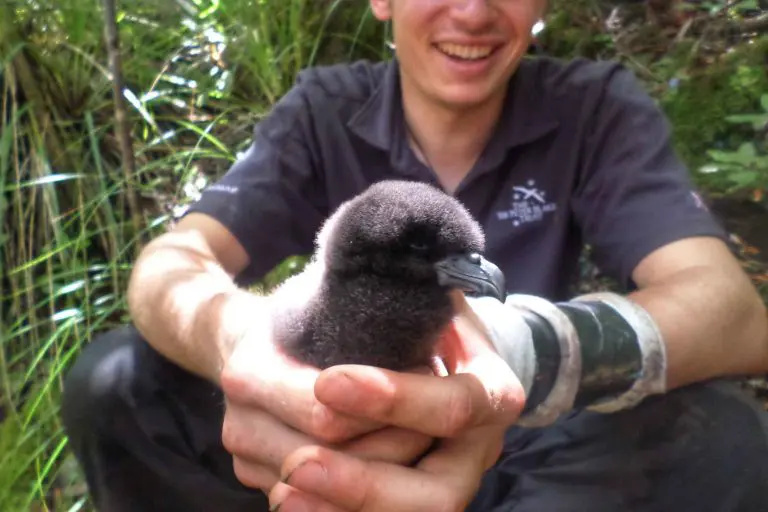After racing through Auckland traffic, I reached the Auckland Domestic Airport, and it finally felt like the trip had begun.
Surrounded by the large domestic providers such as Air NZ and Jetstar, the Barrier Air presence was limited to a small one-man desk, and a couple of 15-ish seater planes that wouldn’t look out of place in a World War II film.
Awesome, I thought. This is different from anything I have ever done before.
After soaring above the Hauraki Gulf with expansive views of Auckland city, Rangitoto, the Coromandel peninsula, and much more, we landed at Claris Airport, Aotea/Great Barrier Island.
I was met by Jordan, a DOC ranger who was born and raised on the island, and he expressed his appreciation and knowledge of the homeland conservation work thoroughly.
I was dropped off with Nikki and Sam from Wildlife Management International Limited, a specialist bird and predator company. We set off up the hill with the intention of making it to our accommodation for the next week, along the Windy Canyon track.
Compared to most native habitats in NZ, the forest of Aotea is in pretty good condition. It has no possums, mustelids, deer, goats or hedgehogs, and over 2/3 of the island is designated conservation land. Meanwhile, rats, mice and pigs are present, and the majority of the conservation land is second growth after mining, logging, burning and grazing.
The discussions along the way up the hills were rich; fishing is thought to be the main cause of the takoketai/black petrel decline, leading to a 2-3% generational reduction. This is dire – only 15,000 birds remain in existence, with 2,500 breeding pairs on Aotea, and 500 on Hauturu/Little Barrier Island.
Although takoketai/black petrels breed on land, they spend the majority of their time at sea, throughout the waters of the Pacific Ocean. Hundreds if not thousands of commercial fishing boats greet them as they cross to the eastern Pacific, their place of residence outside of the breeding season. Takoketai/black petrel are the most at-risk seabird species from commercial fishing, and they are caught in New Zealand waters. The Ministry for Primary Industries oversee commercial fishing here, and are funding our study. It is what’s happening outside of New Zealand waters in the eastern Pacific that is thought to be the main problem – a likely lack of new techniques, right where the birds spend most of their time.
Recent developments to reduce seabird bycatch have been informed by science. Black Petrels get 95% of their food from within the top 10 metres of sea, and so commercial long line hooks are being sunk much faster to reduce the chance of birds diving after the baited line. Large boats also deploy tori lines, long lines that are deployed out the back of the boats above the fishing lines, and typically have streamers attached to deter seabirds.
Pigs are omnivores, and will happily feed on defenceless takoketai, and destroy their burrows. Pigs are spread right across the island, except around the top of Hirakamata/Mt Hobson, the primary location for takoketai on the island.
Soon before reaching the accommodation we passed by a kauri dam, a relict of past intentions, having now shifted to a mentality of preservation.
Upon reaching our place of rest, Nikki told me that it was labelled ‘the rats nest’ by DOC. It was simple, but it certainly wasn’t bad. In fact it was nice to get away from the hustle and bustle from the city into a secluded wee shack.
Day 2 began with rain, and a lot of it. Through the early hours of the morning it was pouring with rain, and the bush was sopping wet when we woke. Pulling birds out of the burrows into wet conditions isn’t good for their welfare, and the decision was made to lay low for the morning. This involved making hatches for the burrows, as when the chick has hatched, both adults leave during the day to feed, and return at night. These hatches allow inward movement, but not out – a crafty new idea that the team was very excited about.
We also spent a lot of time discussing the birds themselves, and the teams vast knowledge soon became apparent.
The afternoon, and over the next few days we ventured off up the hill to check on burrows. WMIL works with approximately 450 study burrows, where they can monitor adult survival rates, juvenile survival rates, and fledgling success (chick survival and independent leaving of the burrow).
Over the past twenty years of monitoring, juvenile and adult survival is lower than sustainable, but fledgling success is okay. Hence, the pests on land aren’t a problem, it is what’s going on out at sea that is causing their decline.
Each of the burrow sites have been gradually added to a map over the years of research, spanning right around the top of Hirakimata/Mt Hobson. Each of them are at different stages; although the takoketai/black petrel breeding is restricted to between October – July, as of late January, some pairs are yet to lay an egg, some have an egg, and some already have a chick they are tending to. Pairs breed for life and return to the same burrow each year, though many are empty, and so we move on and cross them off this year’s list. The adults normally found in these burrows may have lost their way, they may have died or been harmed in some way, or they may simply have decided not to breed this year.
There is a process for checking each burrow, and yet each and every one is different. Sometimes a small man-made hatch is all that stands between the researcher and the bird, though sometimes a long process of climbing beneath a log, reaching in completely (sometimes with a stick), and working with the bird, is required to check it.
One way we can estimate the size of the population is through mark recapture. A certain number of birds are marked, i.e. 200 birds. If 1/5 of the birds we re-site are banded, we can estimate there are 1000 birds.
The week with WMIL flew by, and it wasn’t long until my time was up. I walked down back down to the trail head thinking, ‘what an absolute blast that was’, though time wasn’t up.
Stage 2 of the trip was voluntary work at the Glenfern Sanctuary for a week. Glenfern sanctuary is a peninsula on Great Barrier Island ringed by a fence built in in the mid 2000’s to keep predators out. Mice and a small number of rats still remain upon the sanctuary, but these are heavily managed through trapping and poisoning.
The sanctuary also offers an educational and advocacy element – it is open to the public year round, and offers tours and informational material to visitors.
A small number of black petrels and cooks petrels are located on the peninsula, along with a large number of kaka and the rare chevron skink, which is only found on Aotea/Great Barrier Island, and Hauturu/Little Barrier Island. Recent studies show that birdlife within the sanctuary is much greater than that outside of it.
Over the course of the week I checked traps, filled bait stations, and maintained the fence, alongside Chris and Sarah who are the permanent employees. We also laid tracking tunnels throughout the peninsula, creating ink footprints, and allowing us to figure out the density of invasive species. Of approximately 60 tracking tunnels, 6 were tracked with rat footprints. This was relatively high, reflective of the breeding season and high amount of resources supporting high numbers of rats.
Before I knew it, my time was up on the island. Upon leaving, I had visited the majority of the island, and had got a good grasp of the community, and what they stood for. The conservation work was powerful – I experienced many momentous times realising that my actions were contributing to an incredible place, and an incredible piece of nature. The black petrels on their own are significant, but they also bring guano (bird poo) to the island, loading it up with nutrients that feeds the forest and allows many of the rare and unique plant and animal species present to thrive.
Black petrels, like every other species, are a single part of a bigger picture. Slowly, this is being recognised by our commercial fisheries, alongside significant pest control.
Until next time, Aotea/Great Barrier Island. I look forward to seeing the species that I worked with again, which if the work continues the way it is, will be thriving when I return.

James Ranstead
BLAKE DOC Ambassador 2017


